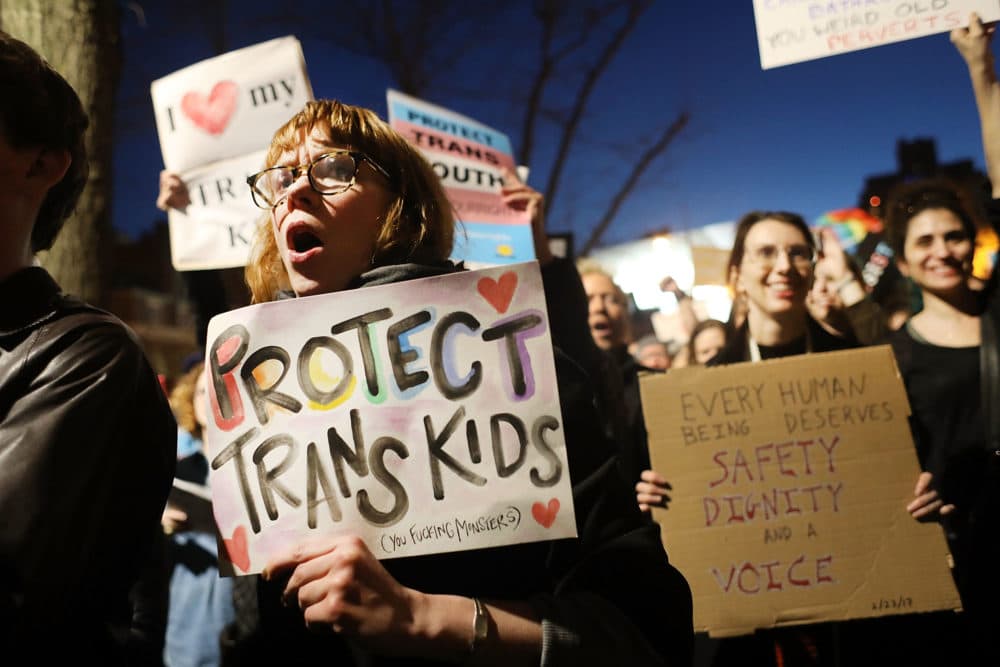Advertisement
Commentary
This Is What Is At Stake When We Talk About Transgender Athletes

In 1977, Renee Richards, the former captain of the Yale tennis team, lost to Virginia Wade in straight sets in the first round of the U.S. Open tennis tournament. The match was noteworthy only because Richards, a 42-year-old ophthalmologist, had originally been denied entry into the tournament by the United States Tennis Association because she had undergone sexual reassignment surgery in 1975.
It took a ruling by the New York State Supreme Court for her to gain her rightful place in the draw.

In 1976, when Richards entered her first professional tournament as a transgender athlete, 23 players withdrew. “It's damn unfair to a woman who has devoted her whole life to tennis to lose a spot in a draw to a man and to become involved in the ‘psychological effects’ of losing to someone with a transsexual background,” said a spokesman for the Women’s Tennis Association.
Women’s sports would soon be “taken over by a giant race of surgically created women,” declared an irate reader in The New York Times.
Forty-some years later, women’s tennis seems OK.
On Jan. 20, President Joe Biden signed an executive order which states, “Children should be able to learn without worrying about whether they will be denied access to the restroom, the locker room, or school sports.” It sets no specific guidelines governing the participation of transgender athletes — it only calls for agencies to review their policies, and within 100 days, come up with a plan to ensure transgender youth do not face discrimination in any aspect of their educational experience. Along with Biden’s repeal of Trump’s ban on transgender military service, this executive order on non-discrimination in education will help build healthier and more lasting bonds between American institutions and its trans citizens, and all of us will benefit.
The conjuring of bogeymen has begun.
Girls’ sports will be “Finished. Done,” said a Canadian track-and-field coach quoted in a Wall Street Journal commentary. “Parents of teen girls are generally uninterested in watching their daughters demoralized by the blatant unfairness of a rigged competition,” the commentary continued. Female athletes, the argument goes, must be protected. From what or whom isn’t exactly clear, but it sounds a lot like the 1970s all over again.
Advertisement
In reality, 16 states already have trans-friendly policies governing sports, which differ in details but allow students to compete according to their gender identification in current school records and daily-life activities. So far, girls’ sports in those states seem OK.
In Connecticut, legal complaints followed after Terry Miller, a transgender athlete, won New England girls' sprint titles at 100-meter and 200-meter in 2018. Miller first began to identify as transgender in seventh grade. Opponents claimed Miller’s participation in track and field -- along with another transgender athlete, Andraya Yearwood — denied benefits to cis athletes, including “advancing to event finals and higher-level regional competitions; the chance to win individual and team state championships; to place higher in such events; to receive awards and other recognition; and possibly to obtain greater visibility to colleges and other benefits.”
To insist that athletes like Miller compete according to the gender they were assigned at birth is to insist that they deny their true selves.
The real benefits of sports for girls are well-documented: better physical health, higher body esteem, lower likelihood of engaging in drug or alcohol use, stronger sense of social connection to schools and the community, better academic performance. Through sport, we achieve a deeper understanding of ourselves — our capabilities, our limits, our true character. To insist that athletes like Miller compete according to the gender they were assigned at birth is to insist that they deny their true selves. It is to demand that they give up the pursuit of self-knowledge that is at the core of athletics.
The same year Miller won double gold, the American Academy of Pediatrics released a study finding that over half of male transgender youth reported attempting suicide at least once, and 30% of female transgender youth. A 2017 study by the CDC found that transgender youth were three times more likely to face online harassment, two to three times more likely to be bullied by their peers, and four times more likely to be threatened with violence or injured with a weapon.
This is what is at stake when we talk about transgender athletes, not who wins what color medal at a track meet. Assuming the president’s executive order becomes policy, it would give more transgender athletes the right to compete as the people they truly are. It offers a glimmer of esteem, of hope, to children who stand on the edge of a dark abyss. It will save lives.
It offers a glimmer of esteem, of hope, to children who stand on the edge of a dark abyss.
It will not take away the rights of cis girls to fight, compete and reach their full potential as athletes. They will not lose the benefits of competition and fellowship that come with athletic participation.
Just as professional tennis has yet to be overrun by "surgically created women," it seems likely that high school sports will remain largely unchanged. Only 0.4% to 1.8% of the population identifies as transgender. Also, trans teens already face intense violence and bullying in the private spaces in schools and locker rooms; so far, few seem willing to make themselves a more public target in the arena of interscholastic sports.
But if this athletic apocalypse does come to pass, there will be ample opportunity to revise the guidelines to protect cis girls’ athletic experience — if, in fact, girls need this sort of protection at all. While we are waiting, we ought to celebrate the fact that the benefits of participation in sport will be extended to a small slice of the population that needs them more than most.
